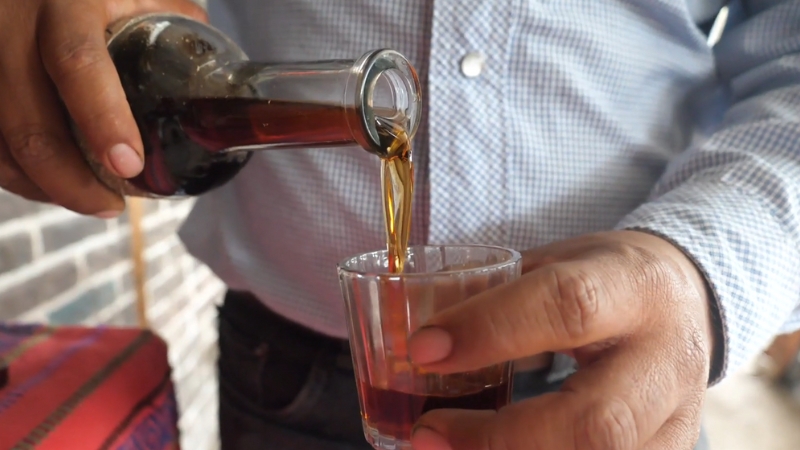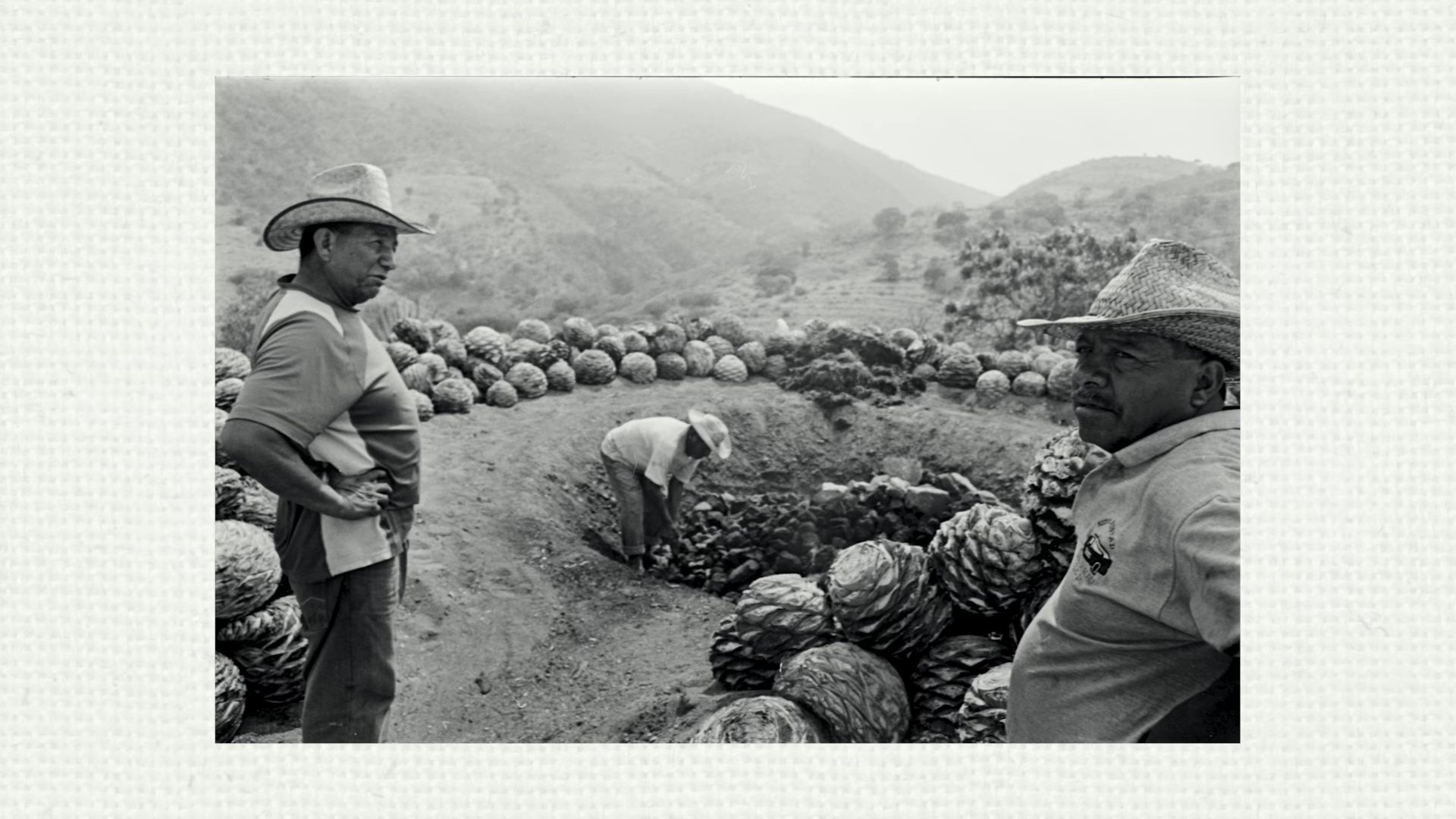For a lot of people outside Mexico, mezcal seems like a recent discovery—something that suddenly popped up in trendy bars and specialty liquor stores. But that’s far from the truth.
Mezcal has a past that stretches back centuries, possibly even longer. It’s more than just another alcoholic beverage; it’s a piece of history, culture, and tradition.
Early Origins
Learned something new over our first mezcal experience: all tequila is mezcal, but not all mezcal is tequila. Tequila comes only from blue agave, while mezcal made from 30 types of agave.
For all bad, mezcal; for all good, as well; and if there’s no remedy, a liter and a half. pic.twitter.com/j1ndahpuj4— Tekin Mentes (@tekinmentes) August 29, 2024
Tequila and mezcal are both products of the agave plant, but one has long overshadowed the other. That’s ironic, considering that some historians argue mezcal may have been the first distilled spirit in the Americas.
There’s debate about exactly when distillation began in Mexico. Some believe indigenous people may have had distillation techniques before the Spanish arrived, while others say distillation only began when Spanish conquerors introduced the method. Regardless, we know that people in and around Oaxaca have been making mezcal for at least 400 years.
Spanish colonizers played a major role in expanding mezcal production. When their imported liquor supplies ran out, they needed an alternative. Sugarcane and grapes were out of the question due to restrictions imposed by the Spanish Crown, so they turned to what was available—agave.
The ‘Elixir of the Gods’
Agave wasn’t just an ingredient—it was sacred. Indigenous communities revered it, and legends grew around its origins. One Oaxacan myth tells of a lightning bolt striking an agave plant, splitting it open and creating the first mezcal. From that moment, it was considered a divine gift, an offering from the gods themselves.
Drinking mezcal wasn’t just about consumption; it was a ritual. It carried spiritual significance, with some believing it had healing properties or could connect them to something greater. That reverence remains today, as many still consider it a deeply traditional and symbolic drink.
Mezcal’s Role in the Economy
View this post on Instagram
Spanish rulers weren’t just interested in mezcal as a drink. They saw a financial opportunity. As they established control over Mexico, they looked for ways to generate revenue. Mezcal became one of those opportunities—something that could be taxed and regulated.
Before long, production was widespread, especially in Oaxaca. Travelers passing through the region in colonial times often returned home with stories of a powerful, smoky drink that packed a serious punch. Even with those early accounts, though, mezcal remained relatively unknown outside Mexico for centuries.
Generations of Craftsmanship
Mezcal making wasn’t just an industry—it was a family tradition. Many families in Oaxaca built their lives around it, passing down production techniques through generations. Those methods were kept secret, ensuring each family’s mezcal remained unique.
Over time, some of those secrets were shared. As mezcal gained more recognition, production increased. Greater availability made it possible for people outside of Mexico to experience the drink, setting the stage for the global interest we’re seeing today.
The International Mezcal Festival
@matadornetwork Immerse yourself in the sights, sounds, and tastes of Oaxaca’s mezcal culture on the Mezcal Amarás Oaxaca Experience 🇲🇽 🎥 @joannakalafatis #OaxacaCulture #mezcal #VisitMexico #Oaxaca ♬ original sound – Matador | Travel + Adventure
One of the biggest turning points in Mezcal’s rise beyond Mexico was the creation of the International Mezcal Festival. First held in 1997, it brought together major producers in Oaxaca for an event that celebrated everything mezcal represents.
Spanning ten days, the festival allows visitors to sample an incredible variety of mezcals, each with its own distinct flavors and characteristics. It’s not just a drinking event; it’s an educational experience. Attendees leave with a deeper appreciation for the craftsmanship involved and a new perspective on just how diverse mezcal can be.
The Different Types of Mezcal
Mezcal isn’t a one-size-fits-all beverage. There are many types, categorized by factors like production method, aging process, and the type of agave used. Here’s a quick breakdown:
- Joven (Young) – Clear and unaged, bottled shortly after distillation.
- Reposado (Rested) – Aged in wooden barrels for anywhere from two months to a year.
- Añejo (Aged) – Aged for at least one year, often longer, giving it a rich and complex flavor.
- Artesanal & Ancestral Mezcal – Produced using traditional, labor-intensive methods that enhance flavor depth.
The agave variety also plays a massive role in flavor. Some of the most commonly used agaves include:
- Espadín – The most common and widely cultivated.
- Tobalá – Small and wild, offering floral and fruity notes.
- Tepeztate – Grows for decades before harvesting, delivering intense and earthy flavors.
- Madrecuixe – Often herbal and grassy with a dry finish.
The Global Mezcal Movement

Even with such deep roots, mezcal is still in the early stages of making a mark worldwide. The past few decades have seen it grow from a niche product to a major player in the spirits industry. More bars, restaurants, and retailers are carrying it, and more consumers are developing a taste for its complexity.
Producers are working hard to ensure Mezcal’s legacy remains intact while adapting to a growing global market. Some purists worry about commercialization diluting its authenticity, but others see it as a necessary step toward giving mezcal the recognition it deserves.
The Sustainability Challenge
As mezcal’s popularity has soared, concerns over sustainability have also grown. Agave plants take years—sometimes decades—to mature before they can be harvested. Overharvesting could threaten the industry’s future if not managed responsibly.
Efforts are being made to protect agave populations. Some producers are focusing on cultivating agave sustainably, while others are exploring ways to replant wild agave to maintain ecological balance.
Looking Ahead

Mezcal isn’t going anywhere. If anything, its presence outside Mexico will only continue to expand. What remains to be seen is how that growth will impact the traditions that make it so special.
One thing is certain—when you take a sip of mezcal, you’re not just drinking a spirit. You’re tasting history, culture, and the dedication of countless generations who have kept this tradition alive.
With continued education, sustainable practices, and respect for the craft, the future of mezcal looks bright. Whether you’re a seasoned mezcal enthusiast or just discovering it for the first time, there’s never been a better time to explore this remarkable drink.

